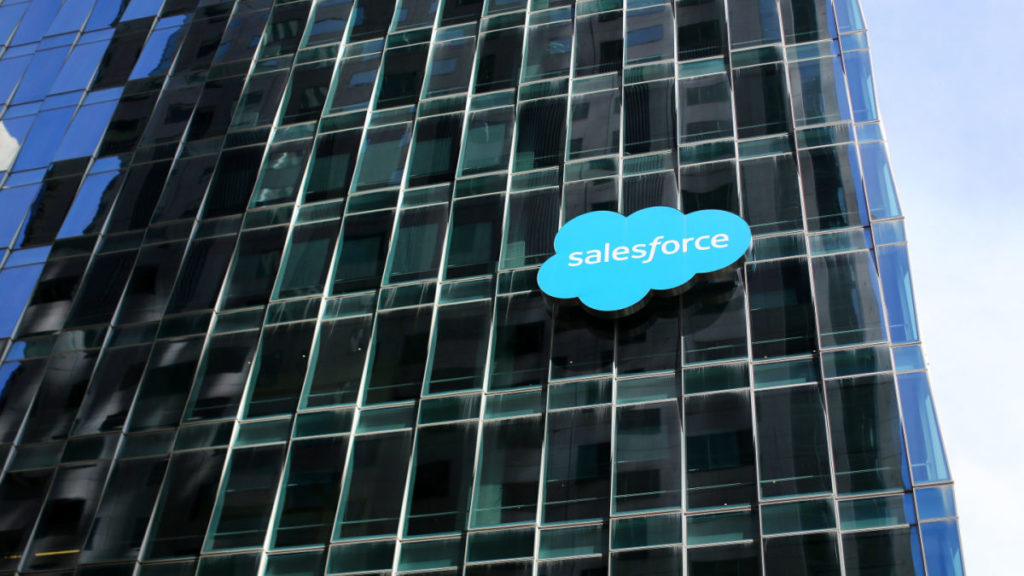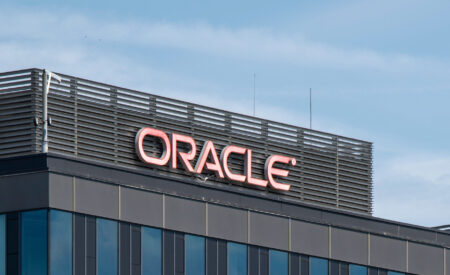
Dear Marc: While you’ve carved a big and richly deserved place in history for yourself and your company, I’m sure you realize that your decision to lay off 10% of your employees addresses only the symptoms and not the underlying disease plaguing Salesforce.
Your letter to employees announcing the layoffs was heartfelt, elegant, and reflective of the unique “Ohana” spirit you have created within Salesforce over the past 23 years, and for that, you deserve a great deal of credit. Layoffs of that magnitude are typically done via press release, with little or no personal involvement of the CEO, and I applaud your willingness to put your name on the announcement and acknowledge that “I take responsibility” for the elimination of about 7,500 jobs.
But.
The simple fact is that a smaller workforce will not fix your biggest challenge, which is the shocking and unprecedented drop in your company’s rate of growth.
As you disclosed on your most-recent earnings results on Nov. 30, Salesforce’s growth rate for the quarter ended Oct. 31 was just 14%. While many CEOs in many industries would sell their souls for a growth rate of 14% — particularly in these troubled economic times — you and the company you’ve built are held to a different standard. And that different standard to which you and Salesforce are held is one that you yourself have created and established: Salesforce’s ongoing track record.
I laid this out in detail one month ago in a piece called “As Salesforce Growth Rate Plunges to 5-Year Low, 5 Big Questions Arise,” including a quarter-by-quarter listing of your growth rates for the past 5 years. Across that five-year span, your growth rate never fell below 20% — but suddenly it drops to 14%.
And your co-CEO, Bret Taylor, stunned you and your company and your customers by saying a sudden farewell after just 12 months in that role.
And your CEO of Slack, Stewart Butterfield, also said a sudden farewell.
And you decided that the situation within the company was so uncertain that you could not offer guidance for the future performance of the company.
It is that set of challenges — slower growth, the sudden departures of top executives, and an inability (unwillingness?) to offer future revenue guidance — that are the real problems at Salesforce. And they are the prime factors behind my recent decision to move Salesforce down on my weekly Cloud Wars Top 10 rankings from #4 to #6. (BTW, the two companies that jumped past you are the two you love to make fun of: Oracle and SAP. I offer my rationale in “Oracle, SAP Leapfrog Salesforce in Cloud Wars Top 10; IBM Jumps, ServiceNow Falls.”)
The elimination of 7,500 jobs will placate, at least temporarily, the investment community — I see that Salesforce’s stock price took a nice jump yesterday after news of the layoffs was released. But those sweeping reductions will not restore your growth rates to the Salesforce standard, and they will not compensate in any way for the loss of Taylor and Butterfield, and they will not provide any more clarity on future Salesforce revenue projections.
Exactly what, Marc, is being done to deal with those challenges, which are the real causes behind the need to cut 10% of your workforce?
Let me offer a final and more-subtle indication of ongoing trouble in SalesforceLand. In a late-September piece called “Salesforce Goes for the Kill—Prematurely,” I described the picture of Salesforce’s unparalleled dominance that you and Taylor laid out at your Investors Day session during your huge Dreamforce event.
I’d like to share a couple of excerpts from that piece because I believe they point to a deeper issue for and the Salesforce leadership team to address, which boils down to this: Based on your own comments, it looks like you’ve come to believe your own hype about Salesforce’s invincibility. And that you’ve begun to believe that Salesforce’s past performance is indeed an indicator of future success.
In a marketplace filled with world-class competitors, that is a wickedly dangerous mindset. So perhaps it is useful to point out the cloud-revenue growth rates of some competitors that you and Taylor, just three months ago, portrayed as lightweights in comparison to the Salesforce juggernaut:
Oracle: 43%
SAP: 38%
And while Workday is not a competitor, it serves many of the same customers that Salesforce does, but Workday’s growth rate held up very nicely at 22.3%.
How is it that those three companies, serving the same market and customers as Salesforce, reported excellent growth rates while Salesforce’s fell precipitously? That’s not a dynamic that layoffs can address.
Now, as for those comments from you and Taylor during the Investors Day session in September, I recall watching the presentation and thinking, “Looks like those guys believe in manifest destiny. Can they really be taking their competitors this lightly — and saying so in public??” As you read these excerpts, please bear in mind they were made not in the recent contrite days of 10% layoffs, but about 100 days ago in the heady times of Dreamforce and having just surpassed (but ever so briefly!!) SAP as the world’s largest enterprise-apps player.
- “I’ll share the exact comments from Benioff and Taylor in a moment, but haven’t we seen this picture before? Big apps company gets bigger, pledges that it can deliver all the vital end-to-end solutions any business could possibly need, and declares all other software vendors to be inferior or irrelevant. But then reality asserts itself — as it always does — and the vibrancy and buoyance and growth and innovation of the entire software sector blast through that flimsy rhetoric and demonstrate, once again, that nobody — nobody! —gets to own first place. Instead of a deed, first place comes with a temporary lease that can be revoked at any time.”
- “Part of Benioff’s argument about becoming untouchable has to do with his claim that Salesforce is now a ‘system of record.’ But wait a dang minute — how many times in the past has Benioff assailed ‘systems of record’ as being stuffy, stodgy, stingy, and stinky? How many times has he dismissed ‘systems of record’ competitors, such as SAP and Oracle?”
- And this final one, Marc, pinpoints what I think is the deepest challenge Salesforce faces: You and your company have begun to believe that customers will love whatever you decide to do because, well, you’re Salesforce! And be sure to go back and read your very own verbatim comments about how you and Taylor “fixed” Genie with what I would call smoke and funhouse mirrors: “I don’t doubt that Salesforce is up to something pretty powerful with Genie. But I think Benioff ought to take another look at that reaction from his top 500 managers at the meeting a couple of months ago: ‘We don’t get it.’ That’s an incredibly important piece of feedback! I don’t mean to sound like an old fogey, but the inclusion of a funny bunny rabbit doesn’t make that dissonance disappear. If Salesforce’s top 500 executives — by Benioff’s own admission — ‘don’t get it,’ how the hell are customers supposed to get it? I love grand ambition and big dreams and the courage it takes to put those out there. For the past 23 years, few people in the world have done that as brilliantly as Marc Benioff has, and as I’ve said before, he will be remembered as an extraordinary leader, disruptor, and business strategist. But there’s a big difference — a huge difference — between being the feisty newcomer who’s shaking things up and annoying the crap out of the leader, and then being the top dog. At the pinnacle, it’s not about sniping at #1 and then coming up with some other way to draw attention to yourself. It’s about leading. It’s about crystal-clear and compelling vision. And I think that Genie needs to go back in the bottle for some fine-tuning because this is a case where Marc Benioff’s vision has outstripped the market’s ability to get it.”
Final Thought: 3 Suggestions
Marc, I reached out to our Acceleration Economy practitioner analyst network of CIOs, CEOs, CMOs— business leaders who are or have been your customers — to solicit their ideas for getting Salesforce back on track. Here are three I believe are particularly worthwhile:
- Net Zero Cloud: As the private and public sectors move from thinking about sustainability as a “green initiative” or a marketing slogan into crafting true profit and process goals supported by real-world data, Salesforce’s fully integrated Net Zero Cloud has big potential. But it’s got to be part of your core strategy.
- Industry Clouds: From the inception of my Industry Cloud Top 10 rankings, Salesforce has held the #1 position — but that’s now threatened by Oracle’s full-blown commitment to end-to-end industry solutions. Your innovation put Salesforce in the driver’s seat with purpose-built, industry-specific solutions, but customer expectations and requirements are accelerating rapidly. It’s time to bring your Industries business fully into the mainstream of who Salesforce is and what it does.
- Partners Ecosystem: According to your site, 91% of customers use Partner Apps and Experts to transform their businesses. In good economic times as well as bad, those partners have the potential to help Salesforce boost its growth rates to the levels your company has made into its standard.
Thanks for your time, Marc, and best of luck in getting Salesforce back on track for matching the standards it has set for the past 23 years.
All the best,
Bob
For more insights on the hows and whys of sustainability’s impact on business processes and profits, please join us for the Acceleration Economy Sustainability Impact Digital Summit on January 26, 2023. Register today for your free streaming pass here.









